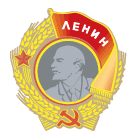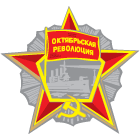MAI institut
 |
  |
The Moscow Aviation Institute named after Sergo Ordzhonikidze (МоÑковÑкий авиационный инÑтитут) or State University of Aerospace Technology was established in 1930 from the Bauman Moscow State Technical University (МГТУ). It is one of the most prestigious institutes of Moscow and numerous foreign students come every years for academics exchanges.
This institute possesses a storage room in which are exposed various cutted parts of rockets, spaceships or probes in order to help the students understand their mechanism.
Propulsive stage Block-D, with an engine 11D58 working with LOX/Kerosene, it was installed on launchers N1, Kvant, Proton and Zenit.
Control system of the rocket 8K51.
The rocket Soyouz (R7) is the oldest rocket still in service. Developed as an ICBM in the 50s it was used to launch the famous Sputnik satellite. This version here is a more recent generation, but the architecture is still the same. It is a rocket in two or three stages, the first stage surround the second (parallel architecture). The orientation of the launcher is done by small engines located in the extremities of the boosters (for a maximum couple), indeed in that time it was not possible to tilt the main engine to modify the trajectory.
Central block of the Soyuz rocket.
Attitude engine of the Soyuz rocket and details of the tilt mechanism.
Bottom of the central block of the Soyuz rocket.
Details of the RD-108 engine (Central block of the Soyuz).
Details of the RD-107 engine (Soyuz’s booster).
Tanks of the Soyuz’s booster.
Booster of the Soyuz rocket.
Near the Soyuz rocket is exposed a layed down Soyuz spacecraft. This spacecraft was developed in the 60s by the OKB-1 design bureau and is still in use nowadays (although it has undergo numerous improvements). It consists of three elements, the service module (contains engines orbitals, ergols tanks, solar arrays and various equipments), the descent module (it is in this module that the cosmonauts take place and which allows them to come back on Earth), orbital module (add supplementary life volume to the spacecraft to achieve experiments).
Service module of the Soyuz spacecraft.
Descent module.
Orbital module.
A little bit farther there is another Soyuz spacecraft surmounted by an orbital module.
Vostok spacecraft. The Vostok is the first manned spacecraft, it is in a spacecraft similar to this one that Gagarine has achieved its historic flight around the Earth on April 12th, 1961.
Soviet Lunar Module (LK). This is the soviet version of the american LEM which should have landed on the Moon at the begining of the 70s, however it can carry only one cosmonaut. Unfortunalty, due to numerous troubles during the development of the giant launcher N1 (rocket that should have launch this spacecraft) the project was stopped in 1974 and this spacecraft never flew. The existence of this spacecraft stayed secret until the end of the 80s.
Impactor.
Part of the docking system of the Lunar Orbiting Spacecraft (LOK).
Probe.
Propulsive stage.
Comments
|
Comment
from
Nicolas Pillet
|
Supers photos !!!!!
|
Comment
from
Nick
|
Seriously good photos! But I think you have not got everything correctly identified? I think the first ‘probe’ is the nose of the LOK, and that what you have called the Proton 3rd stage is the Block D of the N1-L3 moon rocket.
|
Comment
from
Vassili Petrovitch
|
Yes you are right, this is the Block-D which was used on N1, Zenit, Kvant and Proton rocket. It’s an 11D58 engine working with LOX/Kerosene.
The other mistake is a part of the docking system of the LOK.
Thank you.
Write a comment